- April 2018
- March 2018
- February 2018
- January 2018
- December 2017
- November 2017
- October 2017
- September 2017
- August 2017
- July 2017
- June 2017
- May 2017
- April 2017
- March 2017
- February 2017
- January 2017
- 2017
- 2016
- 2015
- 2014
- 2013
News : August 2015
Special Cover on JCI 100 Years Celebrations – 31st August 2015.
Junior Chamber International (JCI) is a global organization of 200,000 young active citizens that grew out of the vision of one man nearly 100 years ago to create sustainable solutions to community challenges. Founded on 13th October 1915 in St. Louis, Missouri, USA by Henry Giessenbier Jr., the movement of taking local action for global impact spread across borders becoming an international organization in 1944. Since then, JCI members around the globe have collaborated on projects ranging from assisting refugees, providing medical care, advancing education and promoting equality. Young active citizens continue to fuel the JCI Movement and take grassroots action for positive change sustaining our legacy of impact.
On the occasion of 100 years celebration, JCI, Hyderabad released a Special cover on 31st October 2015 (Special Cover approval no. AP/27/2015).
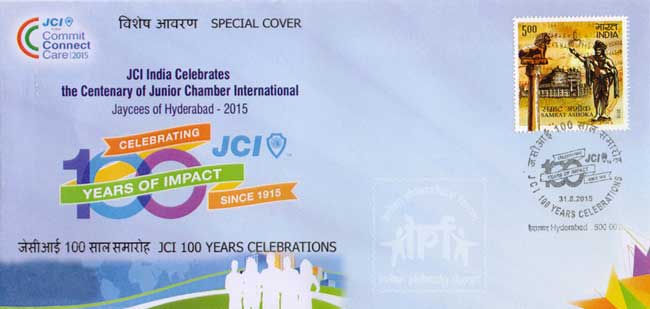
Cover Courtesy: Sagi Srinivas Raju, Hyderabad
Special Cover on Ratnagiri Zilha Gramin Daksevak Sahakari Patsanstha Maryadit – 30th August 2015.
On the occasion of opening ceremony of new office of Ratnagiri Zilha Gramin Daksevak Sahakari Patsanstha Maryadit, Ratnagiri a Special Cover was released on 30th August 2015 at Ratnagiri (Special Cover approval no. MH/27/2015)
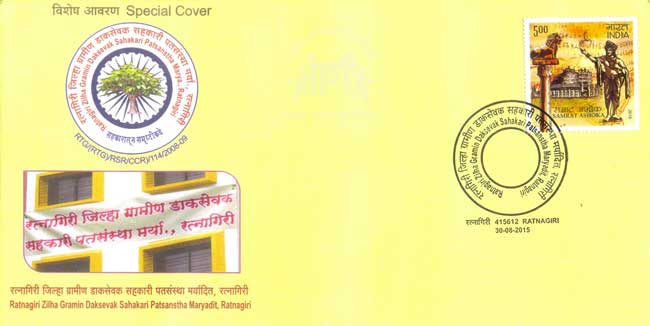
Courtesy: Sreejesh Krishnan, Thiruvananthapuram
Special Cover in commemoration of the First World War – 29th August 2015.
World War I (WWI or WW1), also known as the First World War or the Great War, was a global war centered in Europe that began on 28 July 1914 and lasted until 11 November 1918. More than 9 million combatants and 7 million civilians died as a result of the war, a casualty rate exacerbated by the belligerents' technological and industrial sophistication, and tactical stalemate. It was one of the deadliest conflicts in history, paving the way for major political changes, including revolutions in many of the nations involved.
To pay a tribute to our soldiers who fought in the First World War a special cover was released on 29th August 2015 at Pune. The cover depicts a French Lady offering a rose to an Indian soldier in Paris. The cancellation depicts a rose, symbol of hope and love of a war weary world.

Courtesy: Sreejesh Krishnan, Thiruvananthapuram
Special Covers commemorating Legacy of Le Corbusier – 27th August 2015.
Charles-Édouard Jeanneret-Gris, who was better known as Le Corbusier (b. October 6, 1887 – d. August 27, 1965), was a Swiss-French architect, designer, painter, urban planner, writer, and one of the pioneers of what is now called modern architecture. He was born in Switzerland and became a French citizen in 1930. His career spanned five decades, with his buildings constructed throughout Europe, India, and the Americas. Dedicated to providing better living conditions for the residents of crowded cities, Le Corbusier was influential in urban planning, and was a founding member of the Congrès international d'architecture moderne (CIAM).
In the 1950s, a unique opportunity to translate the Radiant City on a grand scale presented itself in the construction of the Union Territory Chandigarh, the new capital for the Indian states of Punjab and Haryana and India's first planned city. Le Corbusier designed many administration buildings, including a courthouse, parliament building, and a university. He also designed the general layout of the city, dividing it into sectors.
To mark the 50th death anniversary of legendary architect Le Corbusier and to commemorate legacy of Le Corbusier, who planned Chandigarh, Punjab Postal Circle in association with Chandigarh Administration released two special covers on 27th August 2015 at Chandigarh (Special Cover approval nos. PB/02/2015 and PB/03/2015). Special covers were released by Ms. Achla Bhatnagar, Chief Postmaster General, Punjab Postal Circle and the Adviser to the Administrator, UT, Chandigarh, Mr. Vijay Dev in presence of UT Home Secretary, Mr. Anurag Agarwal and other officers at the function held at Govt. Museum and Art Gallery Sector-10, Chandigarh.
These two special covers are available at Chandigarh GPO at Rs. 10 each. Postage Extra.



Photo & Covers Courtesy: Rakesh Walia, Chandigarh
Commemorative Stamp on Samrat Ashoka – 24th August 2015.
Ashoka Maurya, commonly known as Ashoka or Ashoka the Great, was an emperor of the Maurya Dynasty who ruled almost the entire Indian subcontinent from circa 269 BCE to 232 BCE. Ashoka was born to the Mauryan emperor Bindusara and Dharmā (or Dharmmā). He was the grandson of Chandragupta Maurya, founder of Mauryan dynasty. The Avadana texts mention that his mother was queen Subhadrangī. According to Ashokavadana, she was the daughter of a Brahmin from the city of Champa. One of India's greatest emperors, Ashoka reigned over a realm that stretched from the Hindu Kush Mountains in the west to Bengal in the East and covered the entire Indian subcontinent except parts of present-day Tamil Nadu and Kerala. The empire's capital was Pataliputra (in Magadha, present-day Bihar), with provincial capitals at Taxila and Ujjain.
 In about 260 BCE Ashoka waged a bitterly destructive war against the state of Kalinga (modern Odisha). He conquered Kalinga, which none of his ancestors had done. He embraced Buddhism after witnessing the mass deaths of the Kalinga War, which he himself had waged out of a desire for conquest. "Ashoka reflected on the war in Kalinga, which reportedly had resulted in more than 100,000 deaths and 150,000 deportations." Ashoka ruled for an estimated forty years. Ashoka converted gradually to Buddhism beginning about 263 BCE. He was later dedicated to the propagation of Buddhism across Asia, and established monuments marking several significant sites in the life of Gautama Buddha. Ashoka is now remembered as a philanthropic administrator.
In about 260 BCE Ashoka waged a bitterly destructive war against the state of Kalinga (modern Odisha). He conquered Kalinga, which none of his ancestors had done. He embraced Buddhism after witnessing the mass deaths of the Kalinga War, which he himself had waged out of a desire for conquest. "Ashoka reflected on the war in Kalinga, which reportedly had resulted in more than 100,000 deaths and 150,000 deportations." Ashoka ruled for an estimated forty years. Ashoka converted gradually to Buddhism beginning about 263 BCE. He was later dedicated to the propagation of Buddhism across Asia, and established monuments marking several significant sites in the life of Gautama Buddha. Ashoka is now remembered as a philanthropic administrator.
The Ashoka Chakra (the wheel of Ashoka) was built by Ashoka during his reign. Chakra is a Sanskrit word which also means "cycle" or "self-repeating process". The process it signifies is the cycle of time- as in how the world changes with time. The Ashoka Chakra is a depiction of the Dharmachakra (the Wheel of Dharma). The wheel has 24 spokes which represent the 12 Laws of Dependent Origination and the 12 Laws of Dependent Termination. The Ashoka Chakra has been widely inscribed on many relics of the Mauryan Emperor, most prominent among which is the Lion Capital of Sarnath and The Ashoka Pillar.
The Lion capital of Ashoka is a sculpture of four lions standing back to back. It was originally placed atop the Ashoka pillar at Sarnath, now in the state of Uttar Pradesh. The pillar, sometimes called the Ashoka Column is still in its original location, but the Lion Capital is now in the Sarnath Museum. This Lion Capital of Ashoka from Sarnath has been adopted as the National Emblem of India and the wheel "Ashoka Chakra" from its base was placed onto the center of the National Flag of India.
Union Minister for Communications and IT Ravi Shankar Prasad released commemorative stamp on Samrat Ashok at a function held at Vidyapati Bhavan in Patna on 24th August 2015. BJP leaders Shri Sushil Kumar Modi, Shri Nand Kishore Yadav and Shri Mangal Pandey were also present on the occasion.

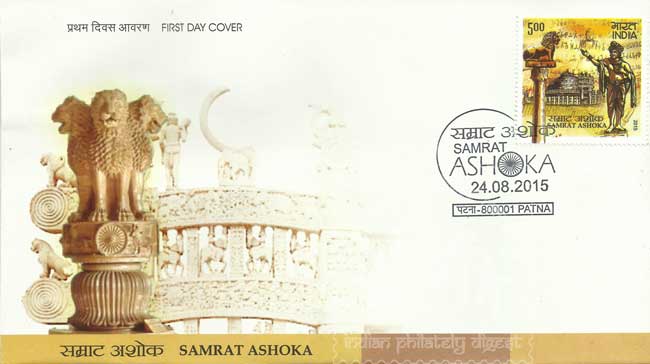
Cover Courtesy: Lalit K Mishra, Patna
Special Cover on 376th Madras Day Celebrations – 22nd August 2015.
The founding day of Madras is considered to be August 22, 1639. It was on that day, in that year, that a sliver of land, where Fort. St. George stands today, was transacted by the East India Company. The deal was struck by Francis Day, his ‘dubash’ Beri Thimmappa, and their superior, Andrew Cogan, with the local Nayak rulers. It is believed that this deal was made on August 22, 1639. Out of the fort, grew settlements. Then the villages around it were brought together. And then, the old and new towns linked up. Today, Chennai stands tall for a variety of reasons.
Madras Day is celebrated on 22nd August every year. The 376th Founding of Madras was celebrated on 22nd August, 2015 by Madras Heritage Lovers' Forum. A Special Cover was released on this occasion by Mr. Mervin Alexander, Postmaster General, Chennai City Region at the function held at Fort Museum, Fort St. George (Special Cover approval no. TN/19/2015). The cover shows Gold Pagoda of Madras Presidency Coinage and the cancellation shows half dudu issued in 1755.


Cover Courtesy: Sreejesh Krishnan, Thiruvananthapuram
Special Cover on Golden Jubilee Celebrations of Chengalpattu Medical College - 21st August 2015.
The history of the Chengalpattu Medical College dates back to days before 1965 when this was a District Head Quarters hospital with its building in the town. In 1965, the Government of Tamil Nadu upgraded this District Headquarters hospital as a teaching institution with 250 beds for clinical training. Vedachalam Mudaliar, the then Chairman of Chengalpattu Municipality, donated a vast area, which is in possession of this institution today. This 46-year old institution was the 6th of its kind to be started in Tamil Nadu. The college initially trained D.M. & S. students, who had passed out of Kilpauk Medical College, for the Condensed MBBS Course. Girl students were first admitted in the year 1970 and the first batch of M.B.B.S. graduates of the college passed out in 1972. The hospital, at its dawn, was functioning with the basic departments which include medicine, surgery, obstetrics and gynecology, pediatrics, orthopedics, ophthalmology, otolaryngology, psychiatry and chest clinic. As days went by, other departments started functioning one by one, thus, making the hospital a tertiary care center with multi specialty approach. The specialties presently functioning are neurology, cardiology, nephrology, pediatric surgery, plastic surgery, urology, neurosurgery, etc. This college is affiliated to the Tamil Nadu Dr. M.G.R. Medical University, Guindy, Chennai. It is recognized by the Medical Council of India.
On the occasion of Golden Jubilee Celebrations of Chengalpattu Medical College a Special Cover was released on 21st August 2015 at Chengalpattu.
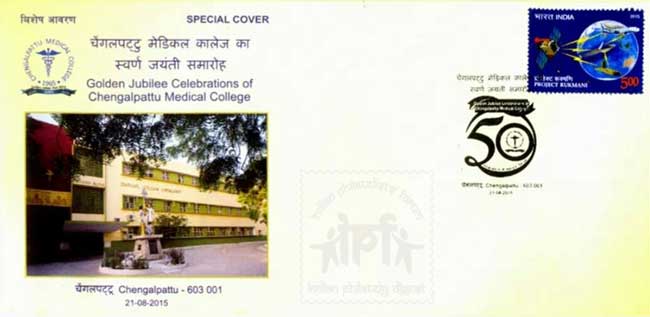
Courtesy: Sreejesh Krishnan, Thiruvananthapuram
Special Cover on 100 years of Nagari Pracharini Sabha, Deoria – 21st August 2015.
The Hindi-Nagari movement in the sense of organized groups seeking change through political action began in the late 1860s and continued with varying intensity well into the twentieth century. The Nagari Pracharini Sabha (Society for Promotion of Nagari) also known as Kashi Nagari Pracharini Sabha was founded in 1893 at the Queen's College, Varanasi for the promotion of the Devanagari script. The Sabha provided a body of men emotionally and intellectually devoted to the growth of their chosen language and script, and effectively channeled resources for a wide variety of political and cultural purposes. The Nagari Pracharini Sabha (NPS) not only spearheaded the agitation which led to the resolution of 1900 but also conducted a search for old Hindi manuscripts, founded a library, published numerous Hindi works including school texts, awarded prizes for good Nagari handwriting and good Hindi literature, and published a scholarly journal in Hindi. The Nagari Pracharini Sabha also had much to do with the founding of the Hindi Sahitya Sammelan (Society for Hindi Literature) of Allahabad in 1910, which soon became the premier organization for the promotion of Hindi and Nagari on the national level. Dictionaries are among the many scholarly publications by the Sabha. The Hindi Sabda-sangra by Syamasundara Dasa was first published 1916-1928, with a new edition published 1965-1975.
Nagari Pracharini Sabha was established in Deoria on 1st January 1915 with the inspiration of Shri Kunj Bihari Chaturvedi, Babu Amir Singh and Shri Ram Narain Mishra and other distinguished Hindi lovers. To commemorate 100 years of establishment of Nagari Pracharini Sabha, Deoria, as special cover was released by Smt. Anita Shrivastava, District Magistrate of Deoria and Subedar Sinh, Superintendent of Post Offices, Deoria on 21st August 2015 at Deoria (Special cover approval no. UP/13/2015). The special cover and cancellation has been designed by Rtn. Himanshu Kumar Singh, Philatelist of Deoria.
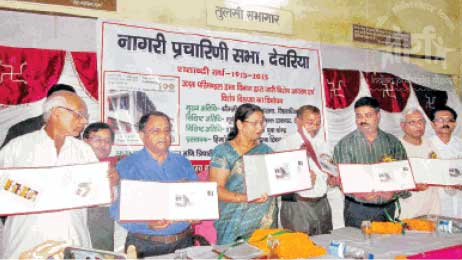
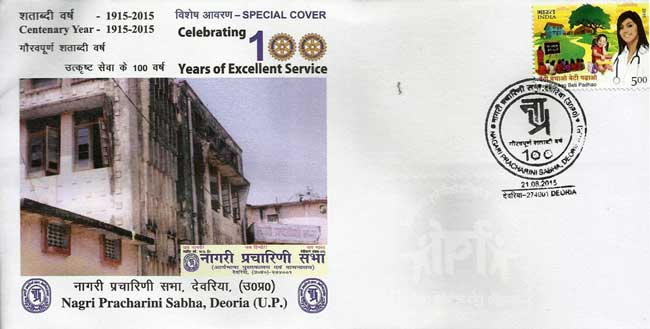
Please contact Shri Himanshu Singh, Deoria, Email: himanshuk450@gmail.com, (M) +919450676342 for requirement of special covers.
Cover Courtesy: Sandeep Chaurasia, Gorakhpur
Special Cover on Madhubani Painting – 17th August 2015.
Madhubani painting or Mithila painting is a style of Hindu Painting, practiced in the Mithila region. Initially, the womenfolk of the village drew the paintings on the walls of their home, as an illustration of their thoughts, hopes and dreams. Painting is done with fingers, twigs, brushes, nib-pens, and matchsticks, using natural dyes and pigments, and is characterized by eye-catching geometrical patterns. There are paintings for each occasion and festival such as birth, marriage, Holi, Surya Shasti, kali puja, Upanayanam, Durga Puja etc. The local mythologies suggest that Madhubani painting was initiated at the behest of King Janak of Mithila, when he commissioned local artists to paint murals in his palace in preparation for the marriage of his daughter Sita to Lord Rama.
Mithila painting, as a domestic ritual activity, was unknown to the outside world until the massive Bihar earthquake of 1934. House walls had tumbled down, and the British colonial officer in Madhubani District, William G. Archer, inspecting the damage "discovered" the paintings on the newly exposed interior walls of homes. Archer - later to become the South Asia Curator at London's Victoria and Albert Museum - was stunned by the beauty of the paintings and similarities to the work of modern Western artists like Klee, Miro, and Picasso. During the 1930s he took black and white photos of some of these paintings. In 1949 in an article in the Indian art journal, Marg, he brought the wall paintings to public attention. Slowly and gradually, the Madhubani painting of India crossed the traditional boundaries and started reaching connoisseurs of art, both at the national as well as the international level.
A special cover was released on 17th August 2015, ‘Madhubani Paintings’ at Sitamarhi, Bihar (Special Cover approval no. BH/08/AUG/2015). The Cover depicts image of ‘Sita Swayamvar” (marriage of Sita with Lord Ram) in Madhubani style of paintings. The top and bottom border of the cover is also depicted as Madhubani Paintings border. The cancellation depicts the images of Lord Ram and Sita.

Courtesy: Lalit K. Mishra, Patna
Karnataka Philatelic Society Governing Council for 2015-2016.
The 40th Annual General Body Meeting of the Karnataka Philatelic Society, Bengaluru was held on 16th August 2015. The following are the newly elected office bearers.
President: Mr. K. Chaitanya Dev
Vice President: Mr. Mani M Krishnan
General Secretary: Mr. Nikhilesh Melkote
Treasurer: Mr. Bharat Kumar
Governing Council Members: Ms. N. Sridevi, Mr. Manish Jain, Mr. Suresh R.
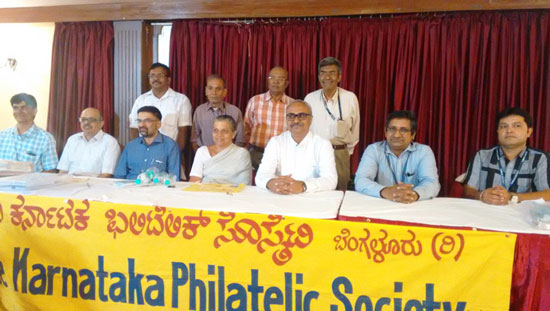
Left to Right (Sitting - New office-Bearers) : Mr. Suresh.R , Mr. Bharat Kumar, Mr. Nikhilesh Melkote, Ms. Sridevi, Mr. Chaitanya Dev, Mr. Mani Krishnan, Mr. Manish Jain Left to Right (Standing-outgoing office Bearers) Mr. Jagannath Mani, Mr. Kannan , Mr. S.S Swamy , Mr. Mahesh Jambulingam
Courtesy: Suresh Rao, Bengaluru
Exhibition on Freedom fighters of India and Mahatma Gandhi through Postage Stamps and First Day Covers – 14th – 16th August 2015.
On the occasion of 68th Independence Day of India, an Exhibition on Freedom fighters of India and Mahatma Gandhi through Postage Stamps and First Day Covers was organized by Shri Ramakant Dave, Philatelist of Vadodara from 14th – 16th August 2015 at Akruti Art Gallery, Nr. Kirti Mandir, Opp. S. S. G. Hospital, Vadodara. The exhibition was inaugurated by Shri E. Radhakrishna IPS, Commissioner of Police, Vadodara.
Philatelic Bureau, Vadodara has opened counter at the exhibition and ‘My Stamp’ facility was also made available at the venue.
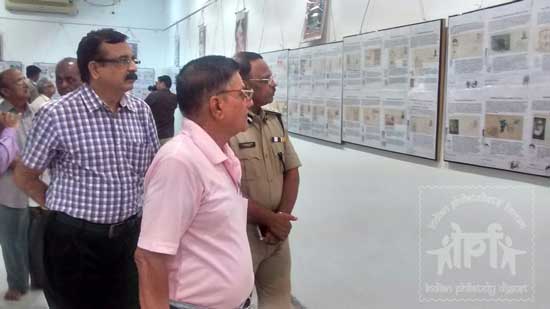
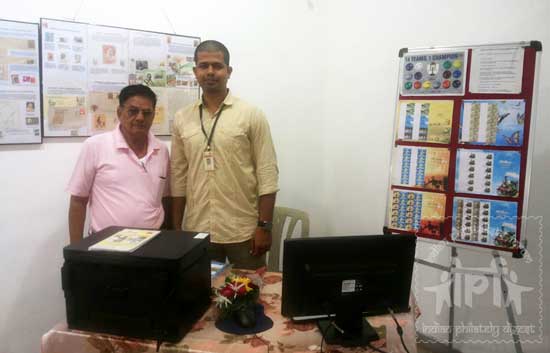
Special Cover on 125th Birth Anniversary of Shri V. Seshasayee - 16th August 2015.
Shri V. Seshasayee was an industrialist and the founder of the Seshasayee Group. He founded Mettur Chemicals (1936-41), Fertilizers and Chemicals Travancore (1944-47), Aluminium Industries, Kundara (1950) and Travancore-Cochin Chemicals. He was instrumental in setting up the first A.C. power supply system in Tamil Nadu and electrification of Tiruchi and Srirangam in late 1920s. The Seshasayee Institute of Technology was founded by Shri Seshasayee in 1952 was the first technical institution in the then composite Tiruchi district. He died in 1958.
The 125th birth anniversary of Shri V. Seshasayee, founder of the Seshasayee Institute of Technology (SIT), Tiruchi was celebrated at SIT Campus, Ariyamangalam,Tiruchirappalli on 16th August 2015. On the occasion a special cover was released in the memory of the late Seshasayee by Shri J. T. Venkateswarlu, Postmaster General, Central Region, Tiruchirappalli at the 125th birth anniversary celebration function held on 16th August 2015.
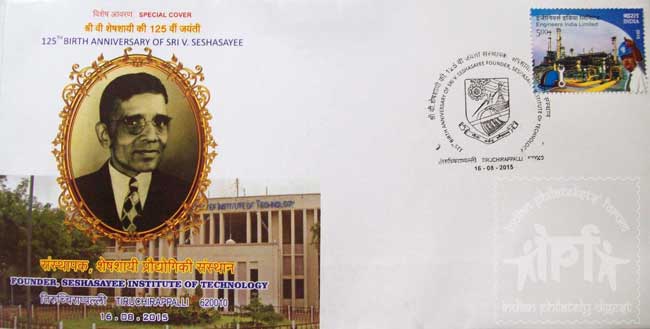
Special Cover on the occasion Bi-Centenary Birth Celebration of St. Don Bosco – 16th August 2015.
St. John Bosco (b. 16 August 1815 – d. 31 January 1888), popularly known as Don Bosco, was an Italian Roman Catholic priest of the Latin Church, educator and writer of the 19th century. While working in Turin, where the population suffered many of the effects of industrialization and urbanization, he dedicated his life to the betterment and education of street children, juvenile delinquents, and other disadvantaged youth. He developed teaching methods based on love rather than punishment, a method that became known as the Salesian Preventive System. A follower of the spirituality and philosophy of Saint Francis de Sales, Bosco dedicated his works to him when he founded the Salesians of Don Bosco, based in Turin. Together with Maria Domenica Mazzarello, he founded the Institute of the Daughters of Mary Help of Christians, a religious congregation of nuns dedicated to the care and education of poor girls. In 1876 Bosco founded a movement of laity, the Association of Salesian Cooperators, with the same educational mission to the poor. Don Bosco established a network of organizations and centres to carry on his work. Following his beatification in 1929, he was canonized as a saint in the Roman Catholic Church by Pope Pius XI in 1934.
The 200th birth anniversary of St Don Bosco was celebrated at the Ravindra Bhavan, Margao on 16th August 2015 with fervour and joy. To celebrate the occasion, the Don Bosco community had organized the programme. A special cover was released on the occasion at the hands of Chief Minister of Goa Shri Laxmikant Parsekar by Postmaster General, Goa Region Shri Vinod kumar Verma (Special Cover approval no. MH/25/2015). Fr Ian Figuerado, provincial of Panjim and Konkan Region, Fr Savio Gomes, principal of Don Bosco College, Panjim; Sister Agatha, Dias vice-Province and Dias vice-Province were also present at the celebration.
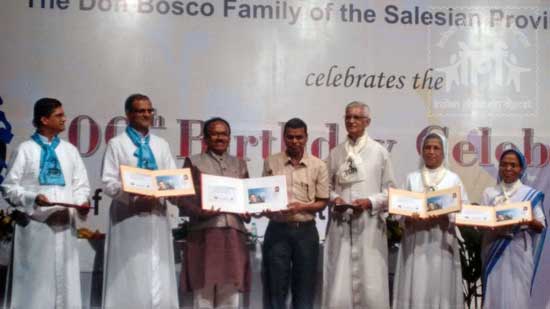
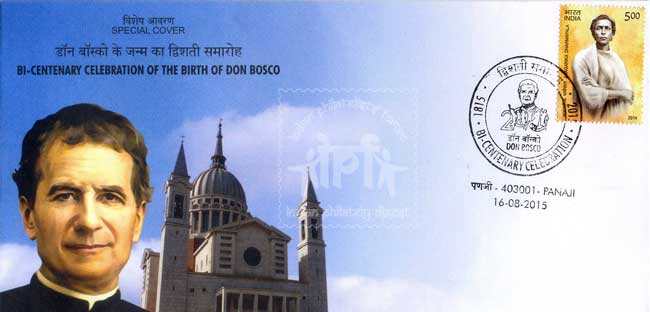
Courtesy: Prasad Barde, Goa
Set of 48 Picture Postcards released by North Karnataka Postal Region - 15th August 2015.
Postcrossing Team, North Karnataka Postal Region has released a set of 48 picture postcards titled ‘Incredible India’ on 15th August 2015. The set is available in an attractive box and is priced Rs. 150 per set. This is 10th set of picture postcards issued by North Karnataka Postal Region. After its launch 10 sets of picture postcards were given away free of cost to first 10 persons who sent request on Facebook page of Postcrossing India.
On the address side of picture postcards text ‘IN’ and 6 boxes has been provided for the use of Postcrossing (a postcard exchange project) members to mention the POSTCARD ID.
Contact for more information: nkrpostcrossing@gmail.com
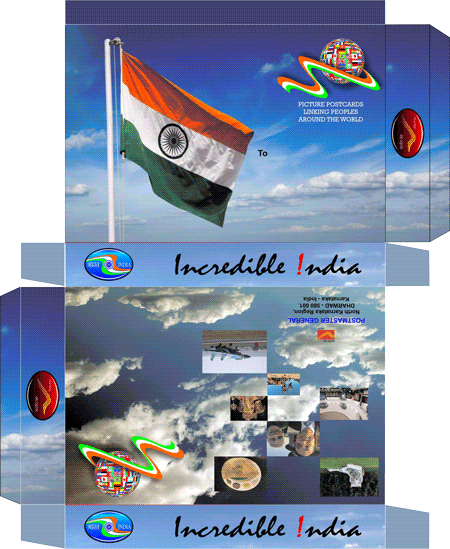
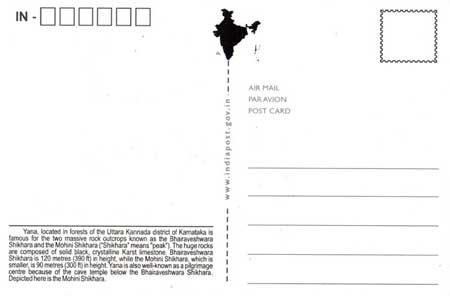
View full set of 48 Picture Postcards below:
Courtesy: Postcrossing India
Special Cover on birth centenary of eminent philatelist Late Col. L. G. Shenoy – 11th August 2015.
Col. Lakshman Giri Shenoy (b. August 11, 1915, - d. June 19, 1997) was born as the second son of Giri Shenoy and Saraswathi Bai. He passed B.A (English) from the Maharajah's College, Ernakulam. His early career was as editor of English newspapers 'Hyderabad Herald' and 'Modern Times'. The powerful editorials which he wrote those days on the Freedom struggle and many other subjects prove his journalistic abilities. He joined British Indian Army during the Second World War as a second lieutenant in 1943. As a military officer, he travelled all over India. He served the army, which later became the Indian Army, for 24 years, retiring in 1968 as Colonel. After retirement, he worked in Hindustan Aeronautics Ltd., Bangalore in higher management cadre. He selected Bangalore as his retirement abode in 1968 and settled there and spent his remaining life for the cause of philately.
Col. Shenoy was founder member of Karnataka Philatelic Society which was founded in 1976 and remained President of the society for four years. He was also a President of Philatelic Congress of India during 1993-95 and member of jury at State, National and International Philatelic Exhibitions. Col. L. G. Shenoy was specialized in the history of Travancore, Cochin, Puddukottai and Mysore Princely States of India. His knowledge of District Dak, Travelling Post Offices, (TPO) of India, Early India Cancellations and Sea Post Offices were outstanding. He also collected stamps and postal stationery on the subject ‘Coconut Tree’. Being a Postal Historian, he maintained a superb library which housed Postal History of C.E.F., I.E.F., WWI, WWII, Censorship Postmarks etc. Realising the need of Indian Philatelic Magazine with an emphasis on the Postal History, he embarked upon publishing ‘IND DAK’ on 1st January 1977. ‘IND DAK’ monthly was published without a break for 21 years till his death in June 1997. He promoted youth philately movement in India and published ‘MAYUR’ once in three months. He conducted awareness classes in Bangalore schools. His scholarly articles on Postal History of India and the Promotion of Youth Philately are the testimony of his great stature in the world of Philately. He passed away on 19th June 1997.
To mark the birth centenary of eminent philatelist Col. L. G. Shenoy a special cover was released by Karnataka Postal Circle at Bangalore with the support of Karnataka Philatelic Society and local philatelists Shri M.S. Ramu (Inddak), Shri Sushil Mehra, Shri Jagannath Mani and Shri Naveein who sponsored the special cover. (Special Cover approval no. KTK/49/2015)
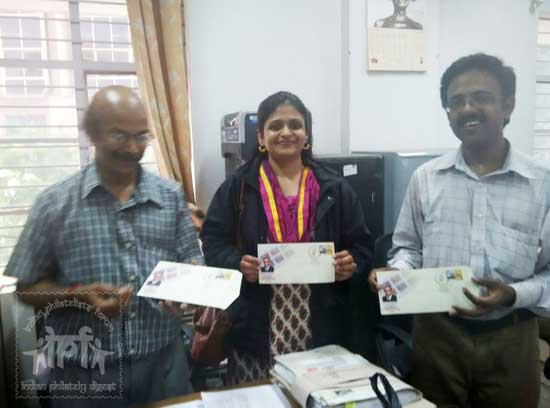
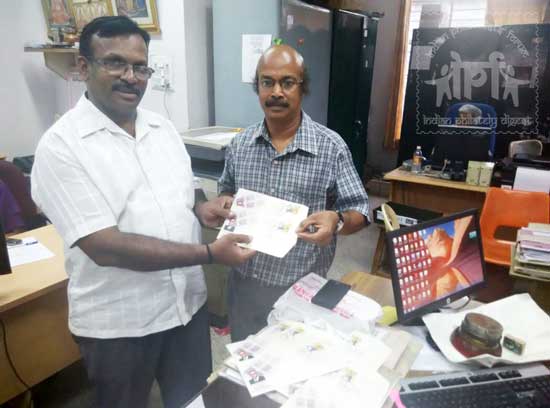
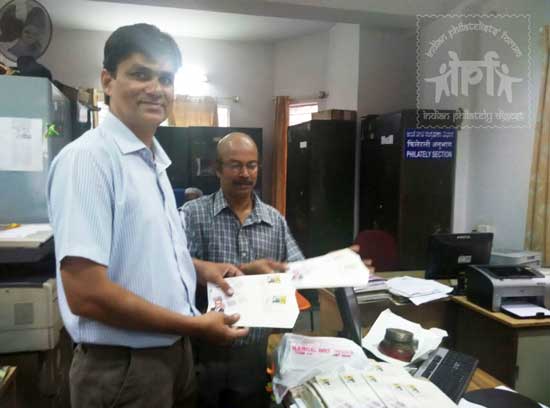

Courtesy: Suresh Rao, Bengaluru
Special Cover on Semiquincentennial year of Danapur Cantonment – 5th August 2015.
Danapur Cantonment or Danapur Cantt established on 5th August 1765, is located on the outskirts of Patna is the second oldest cantonment in the country after Barrackpur Cantonment, West Bengal. Initially, it was set up at Bankipore which fell under the jurisdiction of Patna City. The cantonment was, however, set up in Danapur area, then known as Dinapore, way back in 1766-67. Dinapore was a staging post on the route up the Ganges plain inland from Calcutta towards Delhi, and an important garrison supporting East India Company rule in the sub-continent.
Danapur Cantonment is one of the oldest European cantonments in the region. It was the only white cantonment of the East India Company between at one point of time. It was the largest military cantonment in Bengal, with accommodation for two batteries of artillery, a European and a native infantry regiment. Danapur Cantonment played a big role in the freedom struggle of 1857, as on 25th July 1857 sepoys of the Danapur Cantonment revolted the Britishers. According to sources, Mangal Pandey, a hero of 1857 mutiny, was a frequent visitor to Danapur cantonment. During British period, it was known as 'Little England' for its cleanliness and greenery. The cantonment is also known for two historic churches, St Luke and St Stephen's, built in 18th century.
Presently Danapur is the regimental centre of Bihar Regiment (BRC). It was Lt-Colonel R C Muller, who set up the Bihar Regimental Centre at Agra in 1945. But the regimental centre moved from Agra to Ranchi under his command in April 1946. Subsequently, it again moved to Gaya from where it finally shifted to Danapur in March 1959. In June-July Danapur Cantonment area becomes a bird sanctuary as a large number of migratory birds arrive here.
On the occasion of semiquincentennial (250th anniversary) celebrations of the cantonment a special cover was released on 5th August 2015 at Patna (Special Cover approval no. BH/07/AUG/2015). The Cancellation depicts the celebration logo. The logo, in the pictorial region, bears a tree, D for Danapur, C for Cantonments and B for Board. It also includes ‘Danapur Cantonments Board’ and ‘For Better Life Aways’.
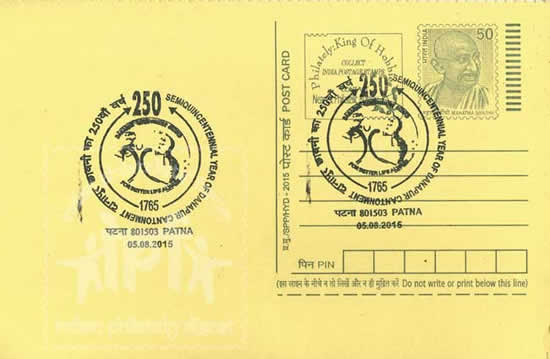

Courtesy: Lalit K. Mishra, Patna
Special Cover on Mahatma Basaweshwar – 3rd August 2015.
Mahatma Basaveshwar (also known as Basava or Basavanna) (b. 1105 – d. 1168) is known as the founder of the lingayat religious sect in India. He brought on a social transformation, often referred as "revolution" in that he changed the lower caste people into a higher thinking of God or Shiva. Born into a brahmin family residing in the small town of Bagewadi, a town in Hungund taluk in Bagalkot district of Karnataka. Basava was also a part of "Bhakti Pantha of 12th century and one of the main figures with his contemporary lingayata or blessed people sect of Hinduism. He and his followers with Allama defined a new way of looking at God and life with numerous Vachanas (sacred hymns). He declared that work is worship and taught the ideals of simple living and the equality of all men. And he practiced what he preached. He became the Prime Minister to king Bijjala who ruled from 1157 to 1167 over Kalyana, a city of historic importance. He was a mystic by temperament, an idealist by choice, a statesman by profession, a man of letters by taste, a humanist by sympathy and a social reformer by conviction.
Lingayatism was founded by Mahatma Basaweshwar and spread by his followers called Sharanas. Lingayatism is a distinct Shaivite denomination practiced in India. It makes several departures from mainstream Hinduism and propounds monotheism through worship centered on Lord Shiva in the form of Ishtalinga.
A Special cover was released on Mahatma Basaweshwar on at Udgir (Latur District, Maharashtra) on 3rd August 2015.

Cover Courtesy: Sreejesh Krishnan, Thiruvananthapuram


